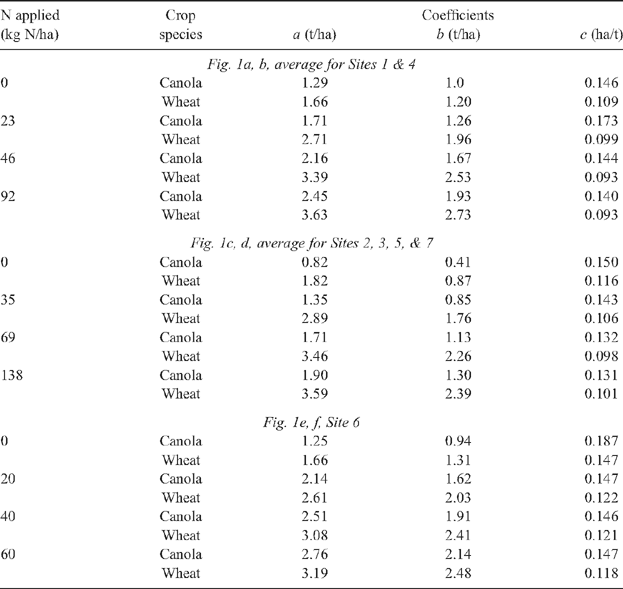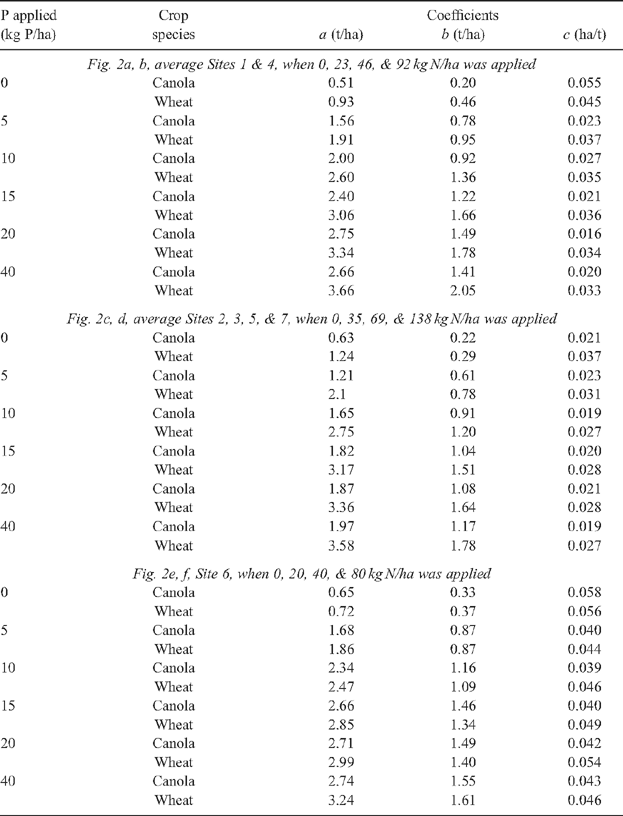Comparing the nitrogen and phosphorus requirements of canola and wheat for grain yield and quality
R. F. Brennan A D and M. D. A. Bolland B CA Western Australian Department of Agriculture and Food, Albany Regional Office, 444 Albany Highway, Albany, WA 6330, Australia.
B Western Australian Department of Agriculture and Food, PO Box 1231, Bunbury, WA 6231, Australia.
C School of Plant Biology, The University of Western Australia, 35 Stirling Highway, Crawley, WA 6009, Australia.
D Corresponding author. Email: rbrennan@agric.wa.gov.au
Crop and Pasture Science 60(6) 566-577 https://doi.org/10.1071/CP08401
Submitted: 10 November 2008 Accepted: 17 March 2009 Published: 12 June 2009
Abstract
Canola (oilseed rape, Brassica napus L.) is now grown in rotation with spring wheat (Triticum aestivum L.) on the predominantly sandy soils of south-western Australia. For both crop species, fertiliser nitrogen (N) and phosphorus (P) need to be applied for profitable grain production. The fertiliser N requirements have been determined separately for canola or wheat when adequate P was applied. By contrast, the fertiliser P requirements of the 2 species have been compared in the same experiment when adequate N was applied and showed that canola consistently required ~25–60% less P than wheat to produce 90% of the maximum grain yield. We report results of a field experiment conducted at 7 sites from 2000 to 2003 in the region to compare grain yield responses of canola and wheat to application of N and P in the same experiment. Four levels of N (0–138 kg N/ha as urea [46% N]) and 6 levels of P (0–40 kg P/ha as superphosphate [9.1%P]) were applied. Significant grain yield responses to applied N and P occurred for both crop species at all sites of the experiment, and the N × P interaction for grain production was always significant. To produce 90% of the maximum grain yield, canola required ~40% more N (range 16–75%) than wheat, and ~25% less P (range 12–43%) than wheat. For both crop species at 7 sites, applying increasing levels of N had no significant effect on the level of P required for 90% of maximum grain yield, although at 1 site the level of P required to achieve the target yield for both crop species when no N was applied (nil-N treatment) was significantly lower than for the other 3 treatments treated with N. For both crop species at all 7 sites, applying increasing levels of P increased the level of N required for 90% of the maximum grain yield. Fertiliser P had no significant effect on protein concentration in canola and wheat grain, and oil concentration in canola grain. As found in previous studies, application of increasing levels of N decreased oil concentration while increasing protein concentration in canola grain, and increased protein concentration in wheat grain. The N × P interaction was not significant for protein or oil concentration in grain. Protein concentrations in canola grain were about double those found in wheat grain.
Additional keywords: Brassica napus L., N and P interaction, oil, oilseed rape, protein, Triticum aestivum L.
Acknowledgments
Funds were provided by the Government of Western Australia and by the Grains Research and Development Corporation (DAW0075). Staff at Research Stations of the Western Australian Department of Agriculture and Food sowed the plots and harvested grain. Technical assistance was provided by Tim Hilder and Frank O’Donnell. The Chemistry Centre (WA) measured soil properties and concentration of nitrogen and phosphorus in grain, and oil concentration in grain. Andrew van Burgel provided statistical advice.
Allen EJ, Morgan DG
(1972) A quantitative analysis of the effects of nitrogen on the growth and development and yield of oil seed rape. Journal of Agricultural Science, Cambridge 78, 315–324.
| Crossref | GoogleScholarGoogle Scholar |
for the relationship between grain yield of canola and wheat and the level of phosphorus (P) applied (always 0, 5, 10, 15, 20, and 40 kg P/ha) when the 4 levels of N listed were applied
Coefficient of determination was >0.994


|


